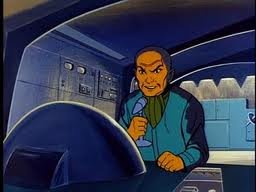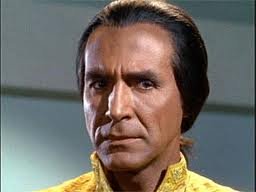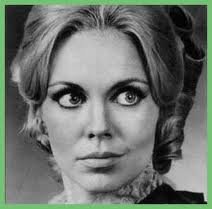I took a six-week hiatus from my blog this summer to finish the first draft of another Michael Stoddard book, called A Hostage to Heritage. While that “cools,” I’ve been editing the second draft of book one of a science fiction series that was almost purchased by Warner in the mid-1990s. As fall is right around the corner, it’s time to resume my bloggery. So without further ado…
*****
Last year, I posted the first part of an essay about the origins of Dunstan Fairfax, my series villain. His character developed in my imagination over a lifetime. He continues to evolve as my series progresses. It’s been awhile since that post, and you may want to reread it before proceeding. This post continues the topic.
Villains in fiction arise from an author’s personal experiences. Those experiences start in childhood with fictional examples. I discussed mine in Part 1. Inevitably, the real world provides its own examples—not just in childhood, but in adolescence and adulthood. Those experiences, too, are cataloged in the psyche, but with a much more three-dimensional flavor.
So while in adolescence and early adulthood, I became acquainted with classic fictional baddies like Lady MacBeth, Mordred, Sauron, the Cthulhu, Professor Moriarty, and Lestat, at the same time, real-life boogers were making themselves known to me—neighbor, relative, school administrator, nurse, doctor, teacher, clergyman, lawyer, police officer, middle manager. A number of them were sociopaths who didn’t give a damn about me or other people. They just wanted control, and they’d placed themselves in positions where they could get control.
Authors transform life’s black moments, transport them onto the page. Horror in an author’s life is an excellent place to look for the nucleus of sociopathic characters. And life after the shelter of high school had a good bit to teach me about horror and sociopaths.
January 1978, right after I’d transferred to a college campus in north Florida to complete a Bachelors degree, the nation was flooded with news of horrific murders committed at Florida State University, in Tallahassee, not far from me. Ted Bundy had sadistically murdered young women my age. While he remained at large, and for weeks after he’d been caught, the atmosphere at college campuses all over the region was oppressive, near lock-down, especially after Bundy’s multi-decade “career” came to light. At my school, campus security beefed up. Students didn’t walk anywhere alone. Two female acquaintances quit college and moved back home with their parents.
Bundy was one of the twentieth century’s most infamous serial killers, a sociopathic Goliath. The effect he had on the people and institutions around me left an indisputable imprint on my imagination. Even though the word “sociopath” still hadn’t made it to watercooler discussions in January 1978, I learned that not all sociopaths are created equal. Those I’d met paled in comparison to Bundy. He demonstrated that there were monsters who could terrorize entire populations.
A year and a half later, I completed my first novel-length manuscript, book one of a science fiction series. The series villains, called Erovians, are an entire race of sociopaths: a “Goliath” that doesn’t give a damn about other sentient life. “David” in this series is humans and other sentient species who received Erovian genetic tampering. In the mid-1990s, the first book of that series was the book that came within a hair’s breadth of being purchased by Warner. You may see that book for sale soon.
Murder on the first floor
By the mid-1980s, the easygoing tropical paradise of my childhood had vanished. Sure, Jimmy Buffet the balladeer was blending margaritas in Key West, and Don Johnson was making crime in steamy Miami look cool, but they were fiddling while Rome burned. South Florida had mutated into an ugly fusion of traffic, concrete, and volatile ethnic groups. Crime escalated, even in the stable neighborhood where I lived near the Intercoastal Waterway, in a second-floor condo.
In the spring of 1986, a neighbor’s purse was snatched while she was on the condo property. In the summer, another neighbor was nearly beaten to death by her alcoholic husband. (I was one of three neighbors who called 911 that night.) And that fall, the neighbor in the condo below mine was
tortured to death by some of his acquaintances. His murderers were garden-variety thugs who were caught the next day. Nevertheless, another horror imprint was left on my imagination. I’ve never forgotten the sight of yellow crime scene tape strung all over the place I called home. Or the smell of rotting garbage and blood-soaked carpet while crime scene investigators took their time processing the place. Or the quantity and size of cockroaches that invaded my home because they were displaced by the cleanup.
I’d been brought up on the space program and had watched the launch of Apollo missions from the roof of my house. The space program was Florida. Then the shuttle “Challenger” blew up in January 1987. In the aftermath of the horror, we learned that decision-makers at NASA were aware of the potential mechanical failure and approved cheaper parts that might not hold up. Save a few bucks, kill seven astronauts. Were these decision-makers sociopaths? Prioritizing the bottom line above humanity is characteristic of the thinking of many sociopathic managers in Corporate America. You decide. For me, the Challenger disaster spelled closing time. I moved to Atlanta, Georgia later that year to earn a Masters degree.
The cannibal and the watercooler

In 1988, Thomas Harris’s second book about a cannibalistic psychiatrist hit the shelves. Rather sleepily it climbed the charts, but what sent The Silence of the Lambs into orbit and turned Dr. Hannibal Lector into a cultural icon was the movie, released in 1991, and Anthony Hopkins’s portrayal of Hannibal. After that, the word “sociopath” became part of watercooler conversation at the workplace.
The national media glommed onto sociopathic killers with glee. It turned the 1989 execution of Ted Bundy in Florida into a three-ring circus. The number of people who tuned in to watch astounded me. Atlanta itself didn’t lack for sociopathic killers to fill the local news. One was Emmanuel Hammond, who kidnapped, assaulted, and murdered a woman named Julie Love in 1988. Another was lawyer Fred Tokars, who scheduled a hit on his wife Sara in 1992 while his young sons watched, because Sara had found out about his criminal activities.
But even after all that, I wasn’t quite ready to create Fairfax’s character. A few more pieces needed to fall into place first. I cover the final pieces that triggered the spawning of his character in the third and last installment of this essay.
**********
Did you like what you read? Learn about downloads, discounts, and special offers from Relevant History authors and Suzanne Adair. Subscribe to Suzanne’s free newsletter.





